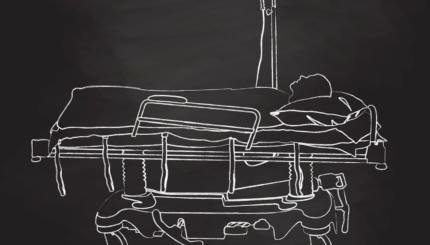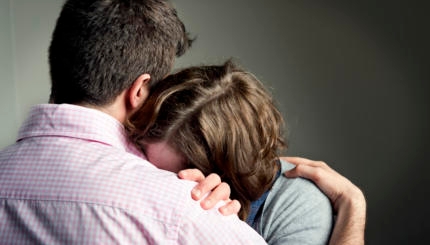In addition to the specific practices related to each phase of mourning, many other practical questions arise concerning death and mourning, including:
– What should I expect at a Jewish funeral?
– For which relatives are we officially considered “mourners”?
– How might tzedakah (righteous or charitable giving) be used to honor someone’s memory?

Help us keep Jewish knowledge accessible to millions of people around the world.
Your donation to My Jewish Learning fuels endless journeys of Jewish discovery. With your help, My Jewish Learning can continue to provide nonstop opportunities for learning, connection and growth.
– What should I know if I want to join–or start–a hevra kadisha (burial society)?
Jewish tradition dictates that one officially mourns (meaning one is obligated to sit shiva and observe other rites of mourning) for parents, siblings (whether half or full), spouse, and children, though the specific obligations vary somewhat depending on the familial relationship to the deceased. In all but Orthodox communities it is de rigueur for both women and men to recite Kaddish for immediate family members, and women saying is becoming more common within some segments of Orthodoxy as well. Children below bar/bat age are not obligated by any of the mourning rules, but in keeping with contemporary mental health wisdom they may be involved to the extent appropriate.
One is not required to observe the practices of mourning for stepsiblings, stepparents, or stepchildren, but some people choose to do so. Jewish law does not strictly require shiva, kaddish, and the like for adoptive parents and adopted children–perhaps in part reflecting an earlier historical reality in which adoption as we know it was less common –but full mourning is certainly permitted.
For those who are comforters rather than mourners, some thoughts to keep in mind when attending a Jewish funeral:
– Funeral usually start on time–arrive early.
– In most cases, you should not expect to greet the family before or after the funeral, or at the burial. Offer your comfort by visiting the shiva home.
– Pay attention for announcements of shiva location and times, and for organizations to which you might make a contribution in honor of the deceased.
– There will be a processional to the gravesite if the funeral was not a graveside ceremony. Go to the cemetery if possible. Stand around the site with other mourners while the family sits or stands at the front.
– Participate in the burial itself; shovel dirt into the grave with your hands or with a shovel. Place the shovel back into the pile of dirt.
– As the mourners leave the grave site between two rows of those attending the burial, say as they pass “Ha-Makom yenahem etkhem b’tokh sha’ar aveilei Tzion vYerushalayim–may the Omnipresent comfort you among all the mourners of Zion and Jerusalem.”
It is customary to wash hands when leaving a cemetery, before you enter the shiva home, or in your own home if you are not going directly to the shiva home.
Tzedakah–righteous giving–to organizations and causes is an appropriate way to honor someone’s memory. In one interpretation, the Talmud portrays as stronger than death itself. Mourners can also keep the deceased’s values alive by contributing time and effort to relevant causes. Visiting the sick, comforting mourners, and involvement in a burial society can be especially appropriate.
For those who wish to consider starting or getting involved in a hevra kaddisha or burial society, some thoughts:
– Most people get over their squeamishness about death relatively quickly. There are also valuable roles that can be played by those who do not wish to have direct contact with corpses.
– The work of preparing the dead for burial can easily be learned by non-professionals, and the training is not difficult.
– The rabbi or rabbis in your community can be helpful in publicizing and organizing a hevra kaddisha. Individuals from existing burial societies can help with your training.
– Each hevra develops relationships with local funeral homes to make cooperation smooth.
– Participation in a hevra kadisha is by most accounts extremely rewarding.
Sign up for a Journey Through Grief & Mourning: Whether you have lost a loved one recently or just want to learn the basics of Jewish mourning rituals, this 8-part email series will guide you through everything you need to know and help you feel supported and comforted at a difficult time.
Looking for a way to say Mourner’s Kaddish in a minyan? My Jewish Learning’s daily online minyan gives mourners and others an opportunity to say Kaddish in community and learn from leading rabbis.


